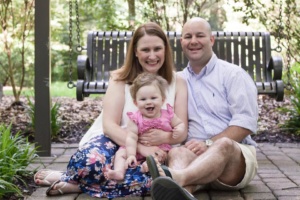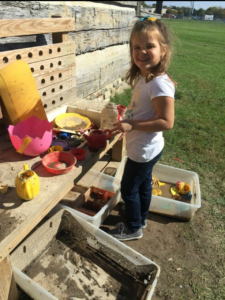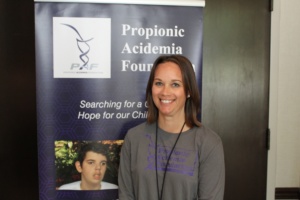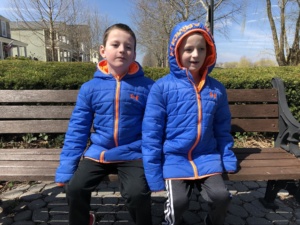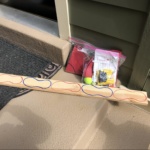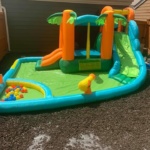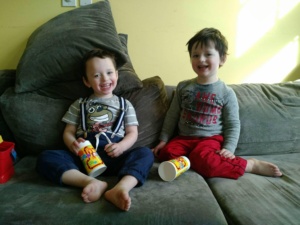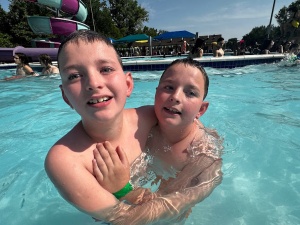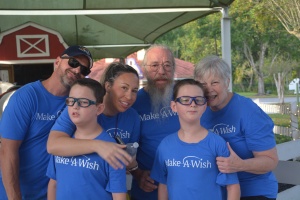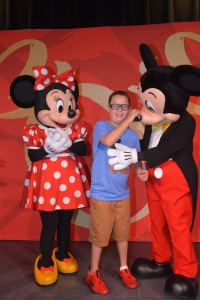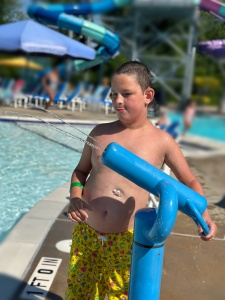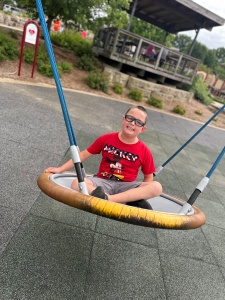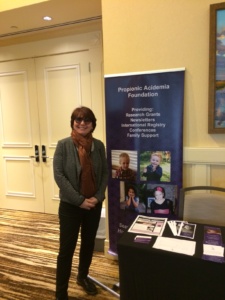 PAF Attends,,en,PAF Attends,,en,PAF Attends,,en,Ich hatte die Ehre, die Konferenz im Auftrag von PAF zu besuchen und war sehr beeindruckt davon, wie gut organisierte die Diätassistentin Gemeinschaft ist und die Vielfalt der Initiativen, die sie ständig Kommunikation für eine bessere diätetische Behandlung von IMDs zu verbessern jagen,,en,die Gespräche und Diskussionen, die auf der Konferenz nahm belegt auch die Notwendigkeit einheitlicher und universelle Behandlungsrichtlinien,,en,Zwei Gespräche waren von besonderem Interesse für Propionazidämie,,en,Patienten,,en 16TH Abbott Nutrition Metabolic Conference
PAF Attends,,en,PAF Attends,,en,PAF Attends,,en,Ich hatte die Ehre, die Konferenz im Auftrag von PAF zu besuchen und war sehr beeindruckt davon, wie gut organisierte die Diätassistentin Gemeinschaft ist und die Vielfalt der Initiativen, die sie ständig Kommunikation für eine bessere diätetische Behandlung von IMDs zu verbessern jagen,,en,die Gespräche und Diskussionen, die auf der Konferenz nahm belegt auch die Notwendigkeit einheitlicher und universelle Behandlungsrichtlinien,,en,Zwei Gespräche waren von besonderem Interesse für Propionazidämie,,en,Patienten,,en 16TH Abbott Nutrition Metabolic Conference
Die Fortschritte in der Verwaltung von Inherited Metabolic Disorders,,en,Von Marisa Cotrina,,co,PAF-Vorstandsmitglied,,en,Zusammenfassung,,en,Abbott Nutrition eingeladen Propionazidämie Foundation,,en,die jährliche Ernährung Stoffwechsel-Konferenz im März dieses Jahres in der Isle of Palms teilnehmen,,en,South Carolina,,en,Diese Konferenz bringt dietitians aus dem ganzen Land und in Kanada die Fortschritte und Herausforderungen bei der Behandlung von erblichen Stoffwechselstörungen zu diskutieren,,en
März 23-25, 2017
By Marisa Cotrina, PAF board member
Summary
Abbott Nutrition invited Propionic Acidemia Foundation (PAF) to attend the annual nutrition metabolic conference this past March in the Isle of Palms, South Carolina. This conference brings together dietitians from around the country and Canada to discuss the advances and the challenges in the treatment of inherited metabolic disorders.
I had the honor to attend the conference on behalf of PAF and was very impressed by how well organized the dietitian community is and the diversity of initiatives they are constantly chasing to enhance communication for better dietary management of IMDs. Jedoch, the talks and discussions that took place at the conference also evidenced the need for more uniform and universal treatment guidelines. Two talks were of particular interest for propionic acidemia (PA) patients. Dietitian Elaina Jurecki präsentiert die neuen evidenzbasierten Ernährungsrichtlinien, die nur für die PA-Gemeinschaft abgeschlossen wurden,,en,eine Initiative, die vor einigen Jahren in Zusammenarbeit mit einigen der besten Ernährungsberater im Land und dass gestartet wird Panning schließlich in dieser Reihe von Leitlinien heraus, dass,,en,machen Management von PA einheitlicher und effektiver in den USA,,en,Für die dietitians neu PA,,en,Loren Pena präsentierte in einem sehr klaren und prägnanten Stil die metabolischen Grundlagen für das Verständnis und die Behandlung von PA,,en; an initiative that started several years ago in collaboration with some of the best dietitians in the country and that is finally panning out in these series of guidelines that, hopefully, will make management of PA more uniform and effective in the USA.
For those dietitians new to PA, Dr. Loren Pena presented in a very clear and concise style the metabolic bases for understanding and treating PA. Ich war sehr dankbar, um zu sehen, wie Dr,,en,Pena befürwortete freundlicherweise für die PA-Gemeinschaft und hob die Rolle PAF und die Patientenorganisationen spielen neue Forschungsinitiativen unterstützen PA Therapien voranzutreiben,,en,In dieser Hinsicht,,en,Ich hoffe, dass die ausgezeichnete Rede von Dr.,,en,Melanie Gilinghan, wie man in der klinischen Forschung entfacht neue Ideen und Interesse im Publikum loszulegen metabolische Management und die Behandlung durch den Patienten gerichtet klinischen Studien zu verbessern,,en,Unter den Gesprächen für andere Erkrankungen,,en. Pena kindly advocated for the PA community and highlighted the role PAF and the patient organizations play in supporting new research initiatives to advance PA therapies. In this regard, I hope the excellent talk from Dr. Melanie Gilinghan on how to get started in clinical research sparked new ideas and interest in the audience to improve metabolic management and treatment through patient-directed clinical trials.
Among the talks for other disorders, es war sehr lehrreich an die Platte von erwachsenen Patienten mit PKU zu hören,,en,und die Notwendigkeit für Ernährung und psychologische Beratung Strategien für Erwachsene mit Stoffwechselstörungen,,en,wie mit dem Leben in der Schule beschäftigen,,en,mit Kindern,,en,Umgang mit Gehirnnebel, wenn Diät nicht eingestellt,,en,effektiv mit Ihrem Partner und Kollegen zu kommunizieren, wenn sie krank fühlt ... auch in der Arena von erwachsenen Patienten,,en,Kiaer,,lt,aus Dänemark,,en,ihre Reise beschrieben auf die Behandlung von PKU Erwachsenen mit spät diagnostiziert und diskutiert, wie,,en, and the need for nutrition and psychological counseling strategies for adults with metabolic disorders: how to deal with life in college, having children, dealing with brain fog when diet is not adjusted, communicating effectively with your partner and colleagues when feeling sick… Also in the arena of adult patients, Dr. Kiaer, from Denmark, described her journey on treating PKU adults with late diagnoses and discussed how, auch im Fall von Erwachsenen mit erheblichen Hirnschäden,,en,gibt es noch Gelegenheit für die Behandlung bis zu einem gewissen Grad der Gehirnfunktion zu verbessern und,,en,wichtiger,,en,Lebensqualität,,en,Das Thema der Lebertransplantation und wie wirksam sie bei der Umkehr und / oder Verhinderung von metabolischem Schaden sein können, im Rahmen der MSUD mit Diätassistentin Melanie Reeves diskutiert,,en, there is still opportunity for treatment to improve to some degree brain function and, more importantly, quality of life.
The topic of liver transplantation and how effective it may be in reversing and/or preventing metabolic damage was discussed in the context of MSUD with dietitian Melanie Reeves. Es war klar, aus dieser der Dringlichkeit sprechen, um mehr Daten auf einer Lebertransplantation von allen Transplantationseinheiten in dem Land zu veröffentlichen, so dass Patienten und Ärzte können eine fundierte Entscheidung über die Risiken und Vorteile dieses Ansatzes für die langfristige Verwaltung von Stoffwechsel machen Störungen,,en,Ich hatte auch die Gelegenheit, sich über neue Innovationen bei der Behandlung von Stoffwechselstörungen zu lernen,,en,Telemedizin in den Entwicklungsländern mit Dr,,en,Hans Andersson,,sv,die metabolische Diät App mit Ernährungs Alette Giezen,,en.
I also had the opportunity to learn about new innovations in the treatment of metabolic disorders: Telemedicine in the developing world with Dr. Hans Andersson, the metabolic diet app with nutritionist Alette Giezen, und angeborene Störungen in der genomischen Ära mit Dr,,en,Neil Lamb,,en,ein exzellentes,,en,sprechen, was Genomik,,en,und wie wir es anwenden zu diagnostizieren und besser zu verstehen, angeborene Stoffwechselstörungen,,en,Letzte,,en,Mark Korson moderierte eine Übung mit Team Kotelett und Team Oregon zwei wichtige Themen in unserer Gemeinde zu diskutieren,,en,Stoffwechselstörungen können ohne medizinische Formeln verwaltet werden,,en,Wann ist es kostengünstig und ethisch angemessen zu Stoffwechselstörungen in NBS enthalten,,en. Neil Lamb, an excellent 101 talk on what genomics is, and how we can apply it to diagnose and better understand inborn errors of metabolism.
Last, Dr. Mark Korson moderated an exercise with team ChoP and team Oregon to discuss two crucial topics in our community: 1) can metabolic disorders be managed without medical formulas?, und 2) when is it cost effective and ethically appropriate to include metabolic disorders in NBS? Obwohl die Diskussionen waren nicht unbedingt der professionelle Blick auf den Moderatoren,en, the arguments utilized were all based in real life cases. Excellent presentations from both teams and fantastic discussion.
Dietitians are a critical line of defense in the chronic management of PA, and we need to listen and work with them as much as with our medical doctors. Insgesamt, a great learning opportunity for PAF
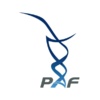
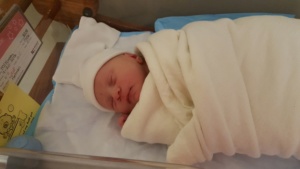
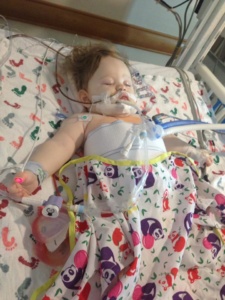 were very fortunate that our first call was “the call” that gave Annabelle her new liver. She went back for surgery around 10:30pm that night and they finished her surgery around 9am that next morning. After surgery Annabelle spent about one week in the PICU. After that week the transplant team moved herto the transplant recovery unit where she stayed until she was discharged. Around two weeks post-transplant Annabelle did encounter a small episode of rejection. Even though “rejection” sounds scary it is very common early on in transplant, and mild cases like Annabelle’s are generally treated with some high-powered IV steroids for a few days. Annabelle was discharged on August 30th and only spent a total of 21 days in the hospital. The transplant/genetics teams in Pittsburgh told us to prepare for complications (as is common with Organic Acidemia patients), but overall Annabelle had very few complications from her transplant surgery for which we are thankful.
were very fortunate that our first call was “the call” that gave Annabelle her new liver. She went back for surgery around 10:30pm that night and they finished her surgery around 9am that next morning. After surgery Annabelle spent about one week in the PICU. After that week the transplant team moved herto the transplant recovery unit where she stayed until she was discharged. Around two weeks post-transplant Annabelle did encounter a small episode of rejection. Even though “rejection” sounds scary it is very common early on in transplant, and mild cases like Annabelle’s are generally treated with some high-powered IV steroids for a few days. Annabelle was discharged on August 30th and only spent a total of 21 days in the hospital. The transplant/genetics teams in Pittsburgh told us to prepare for complications (as is common with Organic Acidemia patients), but overall Annabelle had very few complications from her transplant surgery for which we are thankful.
